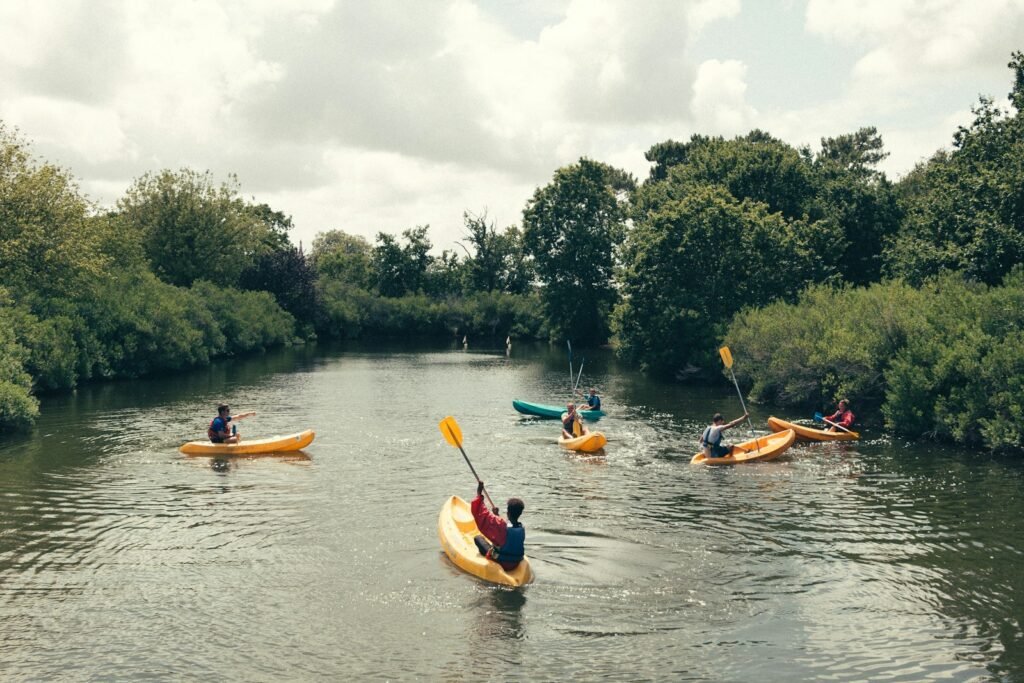Are you a water sports enthusiast or simply curious about different types of watercraft? You may be wondering, “Is a kayak really classified as a boat?” It’s an interesting question that often sparks heated debates amongst sport enthusiasts and marine lovers alike.
Yes, indeed! A kayak is considered a boat. According to the U.S Coast Guard definition, any craft used or capable of being used as means of transportation on water is classified as a boat. Hence, kayaks fall into this category.
Ready to dive deeper into this topic? Stick around! We’ve got fascinating facts and compelling arguments up ahead that will not only satisfy your curiosity but also broaden your knowledge on all things nautical.

What Defines a Boat?
A boat, in its most basic definition, is a watercraft designed for navigation and transportation over water bodies.
It’s a human-made structure that can float and move on the water surface, whether it be lakes, rivers or oceans.
Boats come in various shapes and sizes depending upon their usage and the environment they are intended to navigate.
Let’s dig deeper into what makes up a boat.
The Structure of a Boat
The fundamental elements of any boat include its hull, deck, stern, bow and keel. The hull is essentially the watertight body of the boat that provides buoyancy.
On top of the hull sits the deck which is used for handling sailing equipment or as an area for people to sit or walk around.
The stern refers to the rear end while bow signifies the front part of a boat. The keel plays an integral role in providing stability when navigating through waters.
Varieties of Boats
Boats can be classified based on various factors such as size, purpose or propulsion method.
Some common types include fishing boats designed specifically for angling activities; sailboats propelled by wind power; motorboats driven by mechanical engines; rowboats moved using oars; yachts meant for leisure cruising etc.
Here are some aspects that further clarify this classification:
- Fishing Boats: Equipped with specific features like rod holders, bait wells etc., these boats cater primarily to anglers.
- Sailboats: Relying on wind force caught by sails attached to masts above deck level.
- Motorboats: These boats employ internal combustion engines mounted either inside (inboards) or outside (outboards).
- Rowboats: Simple boats propelled by human power using oars.
- Yachts: These are larger, luxurious boats designed for pleasure cruises or racing.
Safety Measures on Boats
Safety is a paramount aspect when it comes to designing and operating a boat. Life jackets, fire extinguishers, distress signals, first aid kits and life rafts are some of the essential safety equipment that must be present on any watercraft.
The following aspects can help you comprehend the importance of these safety measures:
- All passengers should wear life jackets while onboard to protect them in case of accidental falls into water.
- Adequate firefighting equipment should be readily available to handle any potential fire breakouts.
- In case of emergencies, distress signals such as flares and EPIRBs (Emergency Position Indicating Radio Beacons) can alert rescue teams.
- A well-stocked first aid kit is crucial for treating minor injuries or stabilizing major ones until professional medical assistance arrives.
Identifying Key Characteristics of Kayaks
The art of kayaking requires a suitable vessel, and understanding the key characteristics of kayaks is essential.
When choosing your kayak, you need to consider some vital features that can significantly affect your boating experience. Here’s a detailed breakdown of these crucial elements.
Type of Kayak
Primarily, there are two types of kayaks: sit-on-top and sit-inside. Sit-on-top models are generally more comfortable for beginners as they offer more stability and are easier to get in and out.
On the other hand, sit-inside models provide better control and speed but require more skill.
Kayak Length
The length of a kayak impacts its performance on water. Shorter kayaks (less than 11 feet) offer excellent maneuverability while longer ones (over 12 feet) deliver faster speeds and straight tracking.
Hull Design
A kayak’s hull design determines how it performs in terms of stability. Flat-bottomed hulls provide high initial stability making them ideal for calm waters whereas rounded or V-shaped hulls have better secondary stability suited for choppy conditions.
Kayak Material
Kayaks can be made from different materials like plastic, composite materials (fiberglass or carbon fiber), inflatable plastic, or fabric with metal frame. Each has its advantages regarding durability, weight, maintenance cost, and price.
Tracing the Origins of Kayaks and Boats
The history of kayaks and boats is a fascinating journey that stretches back thousands of years. Born out of necessity, these vessels were initially designed to aid in transportation, hunting, and fishing. They have evolved over time into recreational tools enjoyed by many today.
Let’s dig deeper into their origins.
The Birthplace of Kayaks
The humble kayak traces its roots back to the indigenous Inuit people who inhabited the Arctic regions of North America.
These skilled hunters crafted their vessels from an impressive array of materials at hand – primarily animal skins stretched over a framework made from whalebone or wood.
The word ‘kayak’ itself translates to “man’s boat” or “hunter’s boat,” highlighting its original purpose.
The Evolutionary Journey Of Boats
Boats, on the other hand, have a more diverse origin story due to their global usage across different cultures and civilizations.
The earliest known boats are believed to be simple rafts used in prehistoric times around 8000 years ago.
As societies advanced technologically so did their boat designs; incorporating new materials such as wood planks, reeds, tar pitch for waterproofing and eventually metal.
From these primitive beginnings sprung various types of boats like canoes, galleys, dhows and junks each with unique designs influenced by cultural needs and geographical conditions.
Comparatively modern developments include steam-powered ships during the Industrial Revolution leading up to our current era brimming with high-tech yachts and cruise liners.
These historical snippets provide us with valuable insights into how kayaks and boats came about. Their evolution is not just about technological advancement but also reflects human ingenuity adapting to environmental challenges throughout history.
Are All Kayaks Classified as Boats?

Yes, all kayaks are classified as boats. Despite their unique design and specific use, they fall under the broad category of watercraft known as boats. Their classification is primarily based on their function – navigation in water bodies.
Let’s find out more about this fascinating topic.
The Common Traits between Kayaks and Boats
Kayaks share many common attributes with other types of boats. For instance, they float on water and can be propelled using paddles or oars. They also have a hull – a watertight body that allows them to stay buoyant.
Distinguishing Features of Kayaks
While it’s true that kayaks are classified as boats, they possess distinct features setting them apart from traditional boat designs.
The most notable characteristic is their slim shape designed for one or two passengers who sit facing forward with legs extended frontward.
The Different Types of Kayak Designs
- Sit-on-top: These models allow you to sit on top rather than inside the kayak.
- Cockpit style: Here, the passenger sits inside an enclosed area known as the cockpit.
- Inflatable: These kayaks can be inflated and deflated for easy transport and storage.
FAQs
What is the classification of a kayak?
A kayak falls under the category of small watercraft or boat. It’s specifically designed for paddling and maneuvering in different types of water bodies.
Does a kayak fit into the broader category of boats?
Yes, a kayak is considered to be part of the larger group known as boats. This is because it essentially performs the same function – it’s a vessel used to traverse bodies of water.
How do we categorize kayaks in terms of maritime nomenclature?
In maritime terminology, kayaks are classified as boats. They’re smaller than ships but serve similar purposes like transportation over water bodies.
Are kayaks regarded as vessels or boats when discussing them from a legal perspective?
From a legal standpoint, kayaks are indeed considered boats. They must adhere to specific regulations depending on local laws concerning boating safety and operation.
